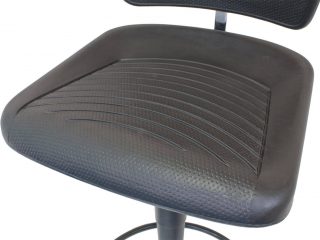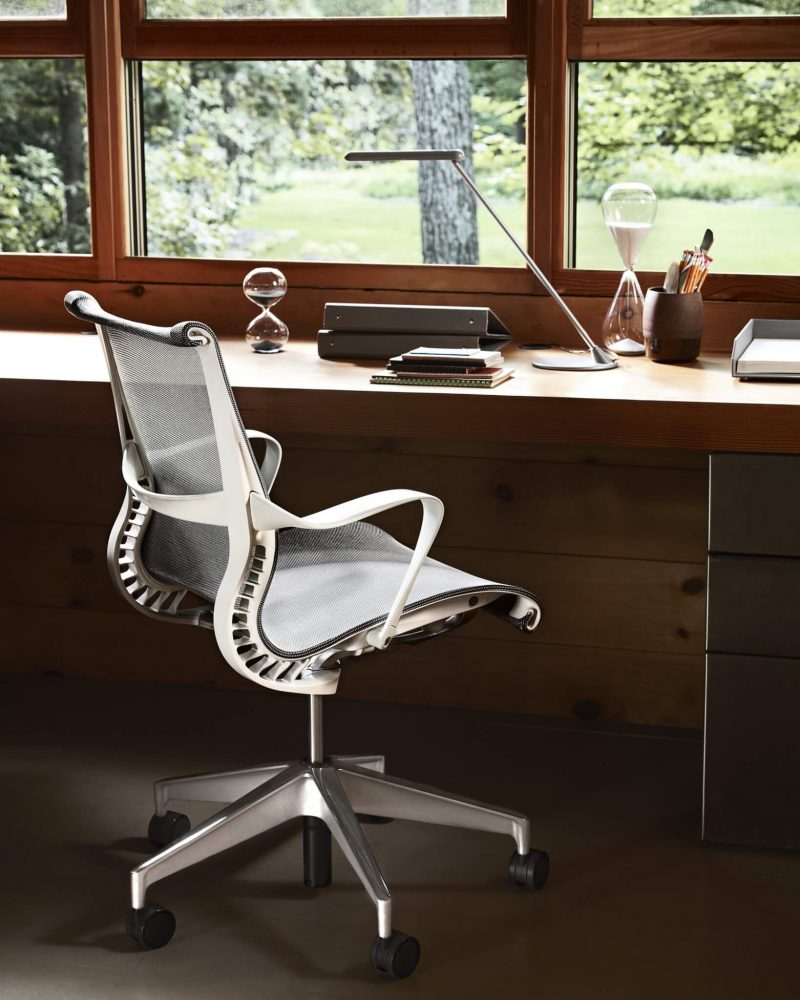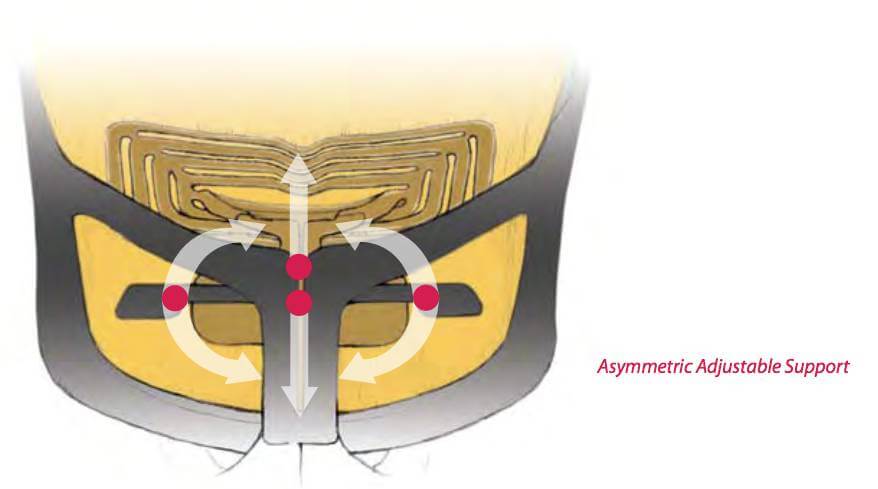Have you been sitting in front of your computer all day long and feel so painful? Your back hurts, your ass sore, and your whole body just feels not right? Well, it is time to upgrade to an ergonomic chair and give your own body some relief!
Lumbar Support
Lumbar support is a fancy way of saying back support. Many people consider this to be the most important part of a quality ergonomic chair. As similar as they generally are, spinal cords and vertebrae are also very different from person-to-person. Each person is unique after all. It only stands to reason that every chair is also different, offering a wide range of support.
Minimum Support
At the very least, the seatback of the chair should have basic curvature to support the spine. However, a generic design will not do a lot of good since every person’s curvature is a little bit different. Still, some are oftentimes better than none.
Single Axis Adjustment
This is a term used to describe a seat back that allows the curve to be adjusted in a minimum of one direction. In most cases, the curve is going to be able to go up and down. This allows the user to move the basic curvature up or down depending on their overall height.
Dual Axis Adjustment
As the name would imply, this means the seatback is moving on more than one axis. As in the single-axis adjustment, the seat will move up and down. However, the extra axis of movement means that the seat back can also move from side-to-side within certain boundaries.
Asymmetric Adjustment
This is the best possible option for support and comfort. This type of supports basically divides the lumbar support into two pieces along the line of the spine. Each piece is then able to move independently on either axis.
Seat Recline
Very few people sit completely still in their chairs. This is actually a positive, considering that movement not only relieves pressure to the spine, but also facilitates blood flow. The best part is that a recline range of only 20% can actually reduce total spinal stress by up to 40%.
Obviously the best reclining options are going to be a chair that has the most options. In this case, this means a reclining portion that pivots, locks, manages overall tension level, is easy to adjust. Not every chair is like that though. Reclinability can be broken down as follows.

A GOOD Chair: Single Point Pivot
The back of the seat will move a limited amount based on the location of the seat pan. This is only slightly different than a fixed back chair. Unfortunately, the front of the seat pan will sometimes rise along with the back of the chair. This causes pressure underneath the user’s legs.
A BETTER Chair: Synchronous Tilt
This is extremely similar to a single pivot reclining mechanism. However, this type of chair has the added benefit of the back of the seat being connected to a mechanism in the rear of the seat. This means that when the seat goes back, the back of the seat pan slides down. This prevents increased pressure on the bottom of the legs.
The BEST Chair: 3-Point Pivot
This is basically the synchronous tilt mechanism with a higher level of fine-tuning. Not only will the seat pan move in relation to the seatback, but it also maintains a consistent level of lumbar support regardless of the recline level.
Seat Pan

Everyone has a slightly different posterior. This is just a fact of life. An office chair that has a fixed seat pan completely ignores this fact. The best ergonomic chairs however provide a range of movement that allows for user customization.
Generally, how much seat pan length you require is almost directly related to your height. In this case, shorter people need less length while taller people need more. If the seat pan is too long for your personal height you can expect to feel increased pressure behind your knees. It may also force them towards the edge of the seat, which prevents their back from being fully supported. Inversely, without enough length the user may experience the wrong type of support, which will force more contact pressure on their thighs.
The best types of ergonomic chairs take this into account by providing the user with between 2-3 inches of total seat pan movement. For most people, the best way to sit is with around 2.5 inches of space between their legs and the seat of the chair. This amount of space ensures that the knee is bent the right way. Short seat pans create to much pressure on the thighs, while too much means the back is not firmly against the lumbar support. This means the user is basically wasting any lumbar support the chair offers.
Here is a review of the popular ergonomic chair seat pan comparisons:
Arm Rest
When it comes to choosing an ergonomic chair, most people are shocked to learn that their arm generally makes up about 10% of their total body weight. If this weight is hanging loosely or is supported incorrectly it can lead to an extreme amount of stress and pressures on most of the upper body and neck. When the arms are held in the same position for an extended period of time it can lead to muscle fatigue. This is often the first step towards a repetitive stress injury.
An armrest with the right amount of padding can not only comfortably support the arm and reduce stress on the spine, but also reduces the chance of serious injury. Armrests that are adjustable allow the armrest to be moved out of the way in order to prevent contact stress or discomfort from constant contact.
Now, every person working in the average office is going to be slightly different. In a perfect world, each employee would be allowed to pick their own chair. However, that’s just not possible. To combat this, the best chairs offer an extremely wide range of movement. At the least, the armrest should move between 3-5 inches vertically.
Front to Back
When it comes to front-to-back movement, range of motion is just as important. This is the type of movement that accounts for individual size and workspace requirements. It also allows the chair to be customized for a variety of tasks. If an armrest is static, it may force the user to sit uncomfortably in the seat of the chair in order to reach their workspace.
Width and Pivot
Finally, nothing is more frustrating then armrests that are either to close or too far apart. Width movement and pivot is the technical term to describe armrests that move in and out. This allows wider users to spread out to their natural position without feeling cramped or scrunched into their chairs. The pivot portion allows the armrests to move on a central axis. It may seem like something that doesn’t come up very often, but the more customizable the better.
Seat Height Adjustment
In terms of an ergonomic chair’s seat height: A seat height adjustment is exactly what it sounds like; the seat of the chair moves up and down to accommodate differences in user height. The perfect chair should have the option of going slightly above and below what the user considers his or her ideal setting. This accounts for a variety of users and daily preference changes.
It is important for users to understand what exactly they need in a height adjustment. Generally, adjustments ranged from 15”-22” will fit people between the heights of 5’ tall all of the way up to people 6’4”. This is not an exact science though, since everyone’s leg length is slightly different.
It is also important to note that most chairs offer a range that is much tighter than 15”-22”. This means that users must pay close attention to chair specifications when purchasing their ergonomic office chairs. Luckily, manufacturers offer most of their chairs with variable height cylinders. This means users of all sizes can all pick them the same chair. Finally, make sure you pick a chair with a pneumatic height adjustment so you can adjust the chair while you sit in it.
Extras
Wheel Base and Casters
The base of the best chairs will have at least five-spoke bases. This will provide the best level of stability. Four spoke bases have a tendency to tip and lean. At best, a tipping chair can lead to an embarrassing moment. At worst, it can result in a painful spill and time out of work. Additionally, while most people move very little from place to place while in their chairs, high-quality casters will glide smoothly across the surface, again reducing the chance of a user tipping and falling.
Headrest
A headrest is obviously designed to reduce the overall stress that the weight of the head places on the neck. Most people think this is a silly consideration, as their neck is constantly supporting their head, sitting or not. However, sitting means that every part of the back, spine, and neck are forced to support more weight than normal. A headrest is nice for most people and an absolute must for anyone with a preexisting neck issue.
For example, some of you may have Aeron Chair at work, here is an additional headrest can make your life easier;
If you are looking for an ergonomic chair to reduce your back pain, you may read this article;
If you are looking for a reading chair at home, click here




